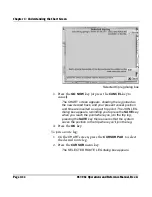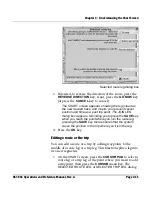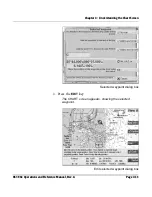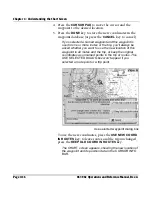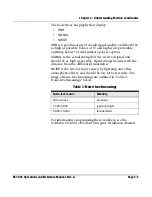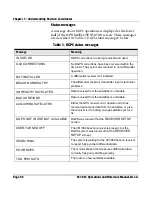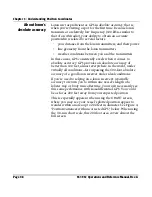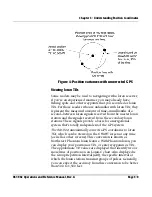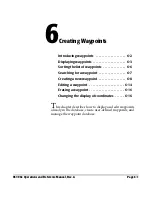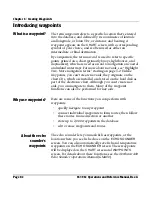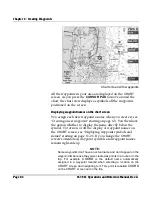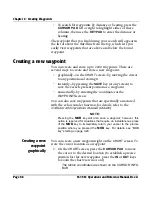
Chapter 5 - Understanding Position Coordinates
961/962 Operations and Reference Manual, Rev. A
Page 5-7
The DGPS signal-quality information is available from the
internal differential receiver.
Understanding Loran-C
What is loran and
loran TDs?
Loran is an acronym for
Lo
ng
Ra
nge
N
avigation, a system of
land-based radio transmitters that give off, or emit, precisely
timed pulses. These pulses are then picked up, or received, by
a loran receiver. The relatives times of arrival of the pulses are
called time differences, or TDs. Charts in loran areas usually
show TD lines of position.
About loran’s
repeatable accuracy
Although loran is susceptible to weather conditions, and
limited to coastal and inland use, it’s a dependable system
familiar to thousands of experienced mariners. Loran can
outperform non-differential GPS in
repeatable accuracy
. Since
the 1970s, loran users have relied on its ability to repeatedly
return them to previously saved locations—with extreme
accuracy. This capability has been especially appreciated by
captains of commercial fishing vessels, since each subsequent
visit to a lobster trap or buoy would be virtually on the mark,
saving valuable time and money. During that time, loran’s
repeatable
accuracy was superior to anything else
commercially available.
In areas with very good coverage (dependent on a host of
factors), loran typically positions your vessel to within 14
meters, or approximately 50 feet, of a previously visited target.
On the other hand, non-differential GPS can only be counted
on to position your vessel to within about 20 to 30 meters
(approximately 100 feet) of your intended destination.
Obviously, non-differential GPS isn’t much help in finding a
mark in dense fog.
Because most loran chains (a group of loran transmitters) were
arranged for optimal coastline navigation, it’s easy to see why
loran’s repeatable accuracy has served harbormasters and
fishing vessels so well for such a long time.
Summary of Contents for 961
Page 6: ...Page viii 961 962 Operations and Reference Manual Rev A ...
Page 8: ...Page x 961 962 Operations and Reference Manual Rev A ...
Page 14: ...Page xvi 961 962 Operations and Reference Manual Rev A ...
Page 92: ...Chapter 3 Using the Controls Page 3 34 961 962 Operations and Reference Manual Rev A ...
Page 160: ...Chapter 6 Creating Waypoints Page 6 18 961 962 Operations and Reference Manual Rev A ...
Page 176: ...Chapter 7 Creating Avoidance Points Page 7 16 961 962 Operations and Reference Manual Rev A ...
Page 202: ...Chapter 8 Creating Routes Page 8 26 961 962 Operations and Reference Manual Rev A ...
Page 380: ...Glossary Page G 8 961 962 Operations and Reference Manual Rev A ...


